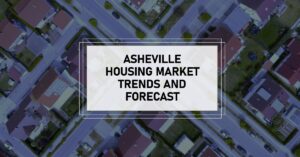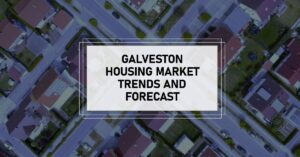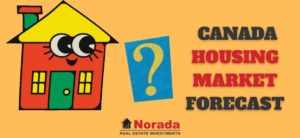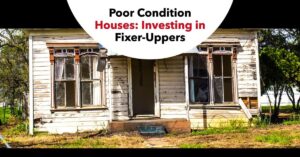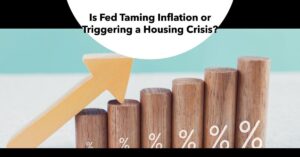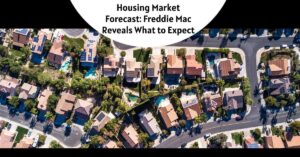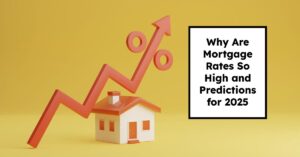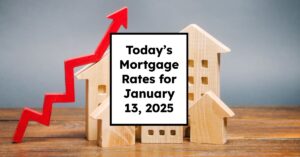Asheville, NC's housing market has become a standout in the state. Luring residents with its vibrant arts scene and proximity to the Blue Ridge Mountains, Asheville has seen a surge in buyer interest.
However, the Asheville housing market is currently showing signs of a cooling trend, with some shifts that potential buyers and sellers should be aware of. While prices haven't dramatically dropped across the board, we're seeing some interesting changes compared to last year. Let's dive into what's going on and what it might mean for you.
Current Asheville Housing Market Trends: What's Happening Right Now?
I've been following the Asheville real estate scene closely, and frankly, it's a bit of a mixed bag right now. It's definitely not the crazy seller's market we saw a couple of years ago, but it's also not a complete buyer's paradise either. It feels like we're in a bit of a transition period, and it's crucial to understand the nuances of these changes.
Home Sales
Let's start with the basics. How many homes are actually selling? When looking at the larger Asheville region, which includes a mix of counties, we see that while new listings are up slightly, closed sales have significantly decreased.
Here is what the numbers look like for November 2024:
- New Listings: 919 in November 2024 vs 951 in November 2023, a slight decrease of 3.4%.
- Closed Sales: 559 in November 2024 vs 821 in November 2023, a significant decrease of 31.9%
What this indicates to me is that while the supply of houses might be increasing a little, the pace of sales is slowing down considerably. This could mean buyers are taking their time, being more selective, or perhaps struggling with higher interest rates.
Looking at the year-to-date numbers across the Asheville region gives us a bigger picture:
- New Listings: 12,615 through November 2024 vs 12,035 through November 2023, a moderate increase of 4.8%
- Closed Sales: 8,615 through November 2024 vs 9,269 through November 2023, a decrease of 7.1%
These figures show a similar pattern across the whole year as well. The market in 2024 has had more new listings but ultimately had fewer closed sales than 2023.
It’s important to remember that these are regional numbers. If we look at Buncombe County specifically, for example, we see a larger decrease in closed sales compared to last year.
- Closed Sales in Buncombe County: 160 in November 2024 vs 287 in November 2023, a dramatic decrease of 44.3%
This data shows that the cooling trend may be more pronounced in some areas than others, with Buncombe County seeing more of a downturn. Other areas in the region have had closed sale numbers that are closer to last year's, and in some instances, even higher.
| Key Metrics | November 2023 | November 2024 | Percent Change | Thru Nov 2023 | Thru Nov 2024 | Percent Change |
|---|---|---|---|---|---|---|
| New Listings | 951 | 919 | -3.4% | 12,035 | 12,615 | +4.8% |
| Pending Sales | 710 | 764 | +7.6% | 9,443 | 8,847 | -6.3% |
| Closed Sales | 821 | 559 | -31.9% | 9,269 | 8,615 | -7.1% |
Source: Canopy Realtor® Association
Home Prices
Now, let’s talk about the factor everyone is most interested in: prices. While some might be hoping for huge price drops, the reality is a bit more subtle.
In the Asheville region, the median sales price has remained relatively stable and has increased slightly year-to-date.
- Median Sales Price (November): $422,000 in November 2023 vs $420,000 in November 2024, a slight decrease of 0.5%
- Median Sales Price (Year-to-date): $405,000 through November 2023 vs $419,951 through November 2024, an increase of 3.7%
The average sales price in the region has actually increased year-to-date:
- Average Sales Price (November): $544,024 in November 2023 vs $521,353 in November 2024, a decrease of 4.2%
- Average Sales Price (Year-to-date): $494,619 through November 2023 vs $527,621 through November 2024, an increase of 6.7%
So, while prices haven't taken a nosedive, they're certainly not skyrocketing like they were before. It seems like prices have stabilized somewhat, with minor fluctuations.
However, it’s worth noting how much the prices are varying between different counties. For example:
- Buncombe County’s Median Sales Price (November): $488,101 in 2023 and $500,000 in 2024
- Haywood County’s Median Sales Price (November): $371,000 in 2023 and $423,500 in 2024.
- Jackson County’s Median Sales Price (November): $444,475 in 2023 and $390,000 in 2024.
- Mitchell County’s Median Sales Price (November): $160,000 in 2023 and $315,000 in 2024
- Swain County’s Median Sales Price (November): $395,000 in 2023 and $250,000 in 2024
- Transylvania County's Median Sales Price (November): $425,000 in 2023 and $610,000 in 2024
This shows that some areas are experiencing price increases while others are seeing declines. It highlights the importance of looking at very specific regions instead of just relying on generalized averages.
| Key Metrics | November 2023 | November 2024 | Percent Change | Thru Nov 2023 | Thru Nov 2024 | Percent Change |
|---|---|---|---|---|---|---|
| Median Sales Price | $422,000 | $420,000 | -0.5% | $405,000 | $419,951 | +3.7% |
| Average Sales Price | $544,024 | $521,353 | -4.2% | $494,619 | $527,621 | +6.7% |
| Percent of Original List Price Received | 95.2% | 93.4% | -1.9% | 96.1% | 94.8% | -1.4% |
Housing Supply
Another vital piece of the puzzle is the housing supply. How many homes are actually available for sale? In the Asheville region, we’ve seen a noticeable jump in inventory.
- Inventory of Homes for Sale: 2,624 in November 2023 vs 3,125 in November 2024, an increase of 19.1%
- Months Supply of Inventory: 3.2 months in November 2023 vs 4.0 months in November 2024, an increase of 25%
This shows that there are more options for buyers compared to this time last year. The “months supply of inventory” figure, which represents how long it would take for all available homes to sell at the current rate, has also gone up. This indicates a potential shift towards a more balanced market.
Again, we must look at individual counties to get a more in-depth understanding of the situation:
- Buncombe County's Inventory: 829 in November 2023 vs 917 in November 2024, an increase of 10.6%
- Haywood County's Inventory: 248 in November 2023 vs 338 in November 2024, an increase of 36.3%
- Madison County's Inventory: 92 in November 2023 vs 108 in November 2024, an increase of 17.4%
- Rutherford County's Inventory: 224 in November 2023 vs 307 in November 2024, an increase of 37.1%
Clearly, supply is growing across the region, but some areas are seeing more options available than others. This is important for buyers to keep in mind when they are deciding where they want to look for a home.
| Key Metrics | November 2023 | November 2024 | Percent Change |
|---|---|---|---|
| Inventory of Homes for Sale | 2,624 | 3,125 | +19.1% |
| Months Supply of Inventory | 3.2 | 4.0 | +25.0% |
Market Trends
Looking at the data, it's clear that the Asheville housing market is experiencing a shift. We are seeing:
- Increased inventory: More homes are available for sale.
- Slower sales: Homes are taking longer to sell. The days on market until sale has increased from 38 in November 2023 to 57 days in November 2024, an increase of 50%.
- Stabilizing prices: While not declining significantly, price increases have slowed down considerably, and some areas are even experiencing decreases.
- Shift in negotiating power: Buyers may have a bit more room to negotiate compared to the recent past. This is supported by the fact that the percent of the original list price received has decreased from 95.2% in November 2023 to 93.4% in November 2024.
In general, the data indicates that the market is becoming more balanced and less of an extreme seller's market than in previous years.
Is It a Buyer's or Seller's Housing Market?
This is the million-dollar question, isn't it? The answer is: it’s complicated. It's not a full-blown buyer's market, but it's certainly moving away from the intense seller's market that we’ve seen in recent history.
Here’s how I see it:
- For Sellers: It’s still possible to sell your home at a decent price, but you might have to be more patient and realistic about your asking price. Overpricing your home could lead to it sitting on the market longer than you expect.
- For Buyers: There’s slightly less competition now, which could mean more opportunities and a little bit of wiggle room with offers, but keep in mind that prices still haven’t significantly decreased and some areas are still quite competitive.
It's really about finding the right property, in the right location, and at a price that works for both the buyer and the seller. This makes it more important than ever to work with a knowledgeable real estate agent who knows the nuances of each area.
Are Home Prices Dropping?
The short answer is no, not drastically. While we're not seeing the dramatic price hikes of the last few years, overall prices in the Asheville region remain relatively stable, with a slight increase year-to-date. However, that’s not to say that prices aren’t dropping in some specific locations. This is where that localized market knowledge is key.
Here’s what I’ve been observing:
- Overall: The overall median sales price in the Asheville region has remained mostly stable, with a very minor decrease for November 2024.
- Local variations: Some specific towns and neighborhoods within the larger Asheville region have experienced varying shifts, with some seeing price decreases and others seeing increases.
- Negotiation: Even if prices aren't dropping significantly, buyers have a little more leverage than before, which means there could be some negotiating room to get a good deal.
I would encourage anyone who is thinking about buying or selling to look closely at the specific areas and neighborhoods that they are interested in to have a better understanding of the local market trends.
Asheville Housing Market Predictions 2025-2026
The Asheville housing market has been a hot topic for years, attracting buyers seeking a beautiful mountain environment and a thriving community. But what does the future hold? Let's dive into the data and see what experts predict for the Asheville MSA (Metropolitan Statistical Area).
Based on the latest projections, it looks like Asheville home values are expected to increase, not decline, in the coming months and into 2025, though at a slower pace than the last few years. There's no crash expected, just a more moderate growth trend.
Now, I know what you might be thinking – “Everyone says the market is crazy!” And you're right; things have been a bit wild. But the data from credible sources like Zillow suggests things are settling down into a more predictable pattern. Let me break down the numbers for you.
Looking at the Numbers: Asheville's Projected Home Value Changes
Zillow's latest housing market forecast gives us some concrete predictions for how home prices might move. Here's a look at what they're projecting for the Asheville real estate market:
| Time Period | Projected Change in Home Values |
|---|---|
| December 2024 (End of Year) | 0.2% |
| February 2025 | 0.7% |
| November 2025 | 3.4% |
As you can see, the forecast indicates that home prices in Asheville are expected to increase. The increase will be gradual, it starts slow and picks up a bit as we move into 2025. It's not the explosive growth we've seen in the past, but it's still positive. To me, it signals a return to a more sustainable rate of appreciation, which is healthy for the market in the long run. I think we can expect things to be calmer and more balanced.
How Does Asheville Compare to the Rest of North Carolina?
It's always good to look at the bigger picture. How does the Asheville housing forecast stack up against other major metro areas in North Carolina? Here’s a quick look at the numbers, again from Zillow:
| Region | Projected Change by End of 2024 | Projected Change by Feb 2025 | Projected Change by Nov 2025 |
|---|---|---|---|
| Asheville | 0.2% | 0.7% | 3.4% |
| Charlotte | 0% | 0.1% | 3.2% |
| Raleigh | -0.2% | -0.5% | 1.7% |
| Greensboro | 0.1% | 0.7% | 3.1% |
| Winston-Salem | 0.1% | 0.6% | 3.2% |
| Durham | 0% | 0.2% | 2.8% |
| Fayetteville | 0.1% | 0.9% | 4.7% |
As you see, Asheville's housing market is showing consistent growth, similar to most of the other areas in the state. Fayetteville appears to have the highest growth projections, while Raleigh is showing a slower trend. Overall, what I observe here is that Asheville is neither the slowest nor the fastest, but it is rather stable and in line with other metro areas in North Carolina.
Will Home Prices Drop or Crash in Asheville?
I’m often asked, “Will the Asheville real estate market crash?” Based on what I am seeing, a crash is unlikely. The data shows a consistent, though moderate increase in home values. A crash typically involves a sudden and drastic fall in prices, and I am not seeing any indicators for this. Instead, I believe we're transitioning from a period of rapid growth to a more stable market. However, it’s always wise to consult a professional financial advisor for personalized advice.
What About 2026?
While we don’t have concrete data for 2026 yet, my educated guess is that the trend we're seeing will likely continue. I anticipate that the Asheville housing market will keep growing, but at a gradual pace, similar to the projections for 2025. I am not expecting drastic swings either way.
In short, if you are thinking of investing or purchasing a home, this data can be a useful reference point for your decision-making.
So, Should You Invest in the Asheville Real Estate Market in 2025?
The Asheville real estate market has garnered significant attention in recent years, fueled by stunning mountain scenery, a vibrant arts scene, and a booming tourism industry. But is it the right investment for you? Let's delve into the key factors to consider before making a decision.
Asheville's Allure: Market Drivers for Investors
Population Growth and Trends
- Steady Growth: Asheville boasts a steadily growing population, attracting young professionals, retirees, and families seeking a unique lifestyle. The Asheville metro area is expected to grow by nearly 13% from 2020 to 2030, reaching a population of 400,000. This consistent increase translates to sustained demand for housing.
- In-Migration: Asheville experiences a constant influx of new residents, further bolstering the housing market. This trend is expected to continue, driven by Asheville's natural beauty and economic opportunities.
Economy and Jobs
- Diversified Economy: Asheville's economy is no longer solely reliant on tourism. The city has witnessed a surge in healthcare, education, and technology sectors, offering a wider range of job opportunities and attracting a skilled workforce. This economic diversification creates a more stable market for real estate investors.
- Booming Tourism Industry: Asheville remains a major tourist destination, attracting visitors with its majestic mountains, pleasant climate, and peaceful environment. Tourism is a significant economic driver, generating $3.1 billion annually for the local economy. This industry supports 27,240 jobs in Asheville and contributes $199.2 million in state and local taxes. In turn, this tax revenue helps reduce the average household tax burden by $1,950, making Asheville an even more attractive place to live.
Livability and Other Factors
- High Quality of Life: Asheville consistently ranks high in livability surveys, boasting a strong sense of community, excellent outdoor recreation opportunities, and a thriving arts and culture scene. This desirability factor fuels real estate investment due to the sustained attractiveness of the city.
- Natural Beauty: Asheville's breathtaking mountain setting offers a unique lifestyle advantage, attracting residents and tourists alike. This scenic beauty is a permanent feature, ensuring the city's long-term appeal.
Rental Property Market Size and Growth
- Strong Rental Market: Asheville's rental market is robust, with vacancy rates remaining low. This high occupancy rate translates to reliable rental income for investors.
- Growing Short-Term Rental Market: The popularity of short-term rentals like Airbnb and Vrbo has surged in Asheville, offering investors an alternative rental income stream. However, regulations surrounding short-term rentals can vary, so thorough research is crucial.
Other Factors Related to Real Estate Investing
- Real Estate Appreciation: While the breakneck pace of price increases might slow down, Asheville's real estate market has historically shown appreciation. This potential for long-term capital gains can be a significant factor for investors.
- Inventory Levels: As inventory levels rise, investors may find more favorable purchasing opportunities compared to the peak seller's market conditions. However, competition can still be present, especially for desirable properties.
- Interest Rates: Rising interest rates can impact investment returns. Carefully evaluate how interest rates will affect your overall investment strategy.
The Verdict: Consider Your Investment Goals
Asheville's real estate market presents compelling opportunities for investors seeking a balance of income generation and potential for appreciation. However, the decision ultimately depends on your individual investment goals and risk tolerance.
By carefully evaluating these factors alongside the data and trends outlined above, you can make an informed decision about whether Asheville real estate aligns with your investment goals.
Work with Norada in 2025, Your Trusted Source for
Turnkey Real Estate Investing
Discover high-quality, ready-to-rent properties designed to deliver consistent returns.
Contact us today to expand your real estate portfolio with confidence.
Contact our investment counselors (No Obligation):
(800) 611-3060
